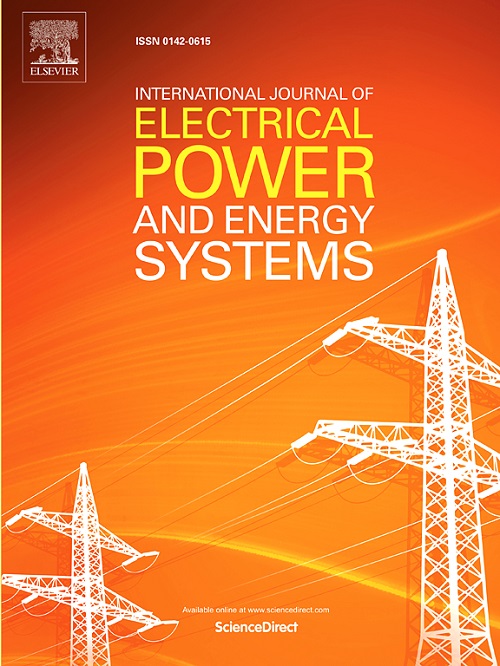基于相位电压同步的低压配电网分布式接地故障检测方法
IF 5
2区 工程技术
Q1 ENGINEERING, ELECTRICAL & ELECTRONIC
International Journal of Electrical Power & Energy Systems
Pub Date : 2025-05-21
DOI:10.1016/j.ijepes.2025.110771
引用次数: 0
摘要
现有的低压配电网接地故障检测方法对带故障电阻的故障适应性较差。针对这一问题,分析了非故障状态下剩余电流的组成及其对接地故障检测的影响。提出了一种分布式接地故障检测方法。该方法将低压配电网划分为多个保护区域,利用各保护区域的差动剩余电流识别接地故障,有效降低了非故障状态下剩余电流的影响。在此基础上,提出了一种以相位电压为基准的时间同步技术,实现了不依赖外部时钟的低成本时间同步。在实际低压平台上进行了仿真和现场试验,验证了该方法的有效性。与传统方法相比,该方法在灵敏度和可靠性方面都有显著提高。本文章由计算机程序翻译,如有差异,请以英文原文为准。
Distributed earth fault detection method for low voltage distribution networks using phase voltage synchronization
The existing earth fault detection methods for low-voltage distribution networks demonstrate poor adaptability to faults with fault resistance. To address this problem, the composition of residual current during non-fault states and its impact on earth fault detection are analysed. A distributed earth fault detection method is then proposed. This method divides a low-voltage distribution network into multiple protection zones and uses the differential residual current of each protection zone to identify earth faults, effectively reducing the impact of residual current during non-fault states. Furthermore, a time synchronization technique using phase voltage as a reference is proposed, which achieves low-cost time synchronization without relying on external clocks. The effectiveness of the proposed method is verified by simulations and field tests in an actual low-voltage platform. Compared with conventional approaches, the proposed method exhibits significant enhancements in both sensitivity and reliability.
求助全文
通过发布文献求助,成功后即可免费获取论文全文。
去求助
来源期刊
CiteScore
12.10
自引率
17.30%
发文量
1022
审稿时长
51 days
期刊介绍:
The journal covers theoretical developments in electrical power and energy systems and their applications. The coverage embraces: generation and network planning; reliability; long and short term operation; expert systems; neural networks; object oriented systems; system control centres; database and information systems; stock and parameter estimation; system security and adequacy; network theory, modelling and computation; small and large system dynamics; dynamic model identification; on-line control including load and switching control; protection; distribution systems; energy economics; impact of non-conventional systems; and man-machine interfaces.
As well as original research papers, the journal publishes short contributions, book reviews and conference reports. All papers are peer-reviewed by at least two referees.

 求助内容:
求助内容: 应助结果提醒方式:
应助结果提醒方式:


